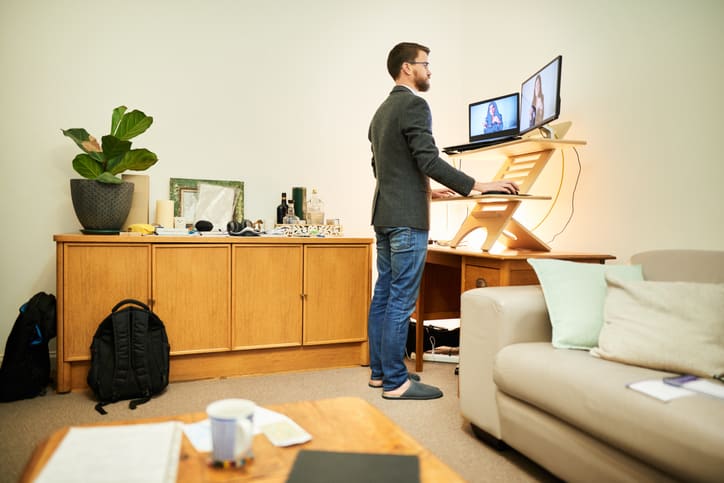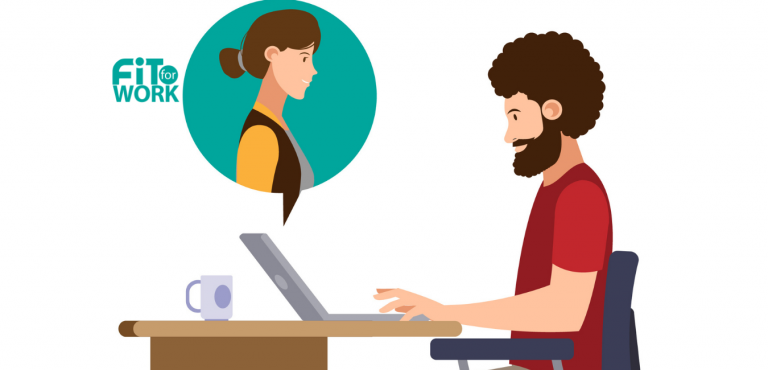Four Ways To Create a DIY Ergonomic Home Office

Estimated reading time:
Guest author: SEATON HUANG, Junoir Research Analyst at ValueChampion
Working at home is convenient, but can also greatly affect your comfort and productivity. Find out how to create a more ergonomic home office setup on a budget.
If you're stuck working from home (WFH) for the foreseeable future, we understand. If you're anything like us, you've probably already experienced some of the positives and negatives of working remotely. On one hand, WFH allows you to loosen up your schedule, dress however you want, and even work from your bed if you wish. However, on the other hand, the distractions or pain of WFH can enable you to be less focused on your work assignments. Because of this, it is now more important than ever to practice ergonomics to optimise your workspace to become a sanctuary of both productivity and comfort.
National University of Singapore (NUS) defines ergonomics as "fitting the job to the worker… [and] adjusting the office workstation to suit [their] needs." This means that ergonomics encompasses not only the body's relation to the workspace but also the entire environment in which you work. Although ergonomics has mostly appeared as a marketing ploy for high-end office furniture, you should know that there are free do-it-yourself (DIY) solutions to make your home office more ergonomic.
1. Improve a standing desk
For years, standing desks (or sit-stand desks) have been among the most trendy pieces of ergonomic office furniture available. Standing desks are popular because they allow users to alternate between their desired working position, leading to less strain on the back due to extensive sitting. However, for many, investing in a standing desk is not cheap, costing around S$160 for a tabletop riser and over S$600 for a fully motorised sit-stand desk.
Fortunately, making your own DIY standing desk solution is both easy and free. You can most likely even create one using materials already available at home. To make a DIY standing desk that is both adjustable in height and stable to work on, you can stack large books on your tabletop and place your laptop atop the stack. If you don't have enough books to do so, you can get creative and use storage boxes or any household object sturdy enough to work on. Alternatively, you can consider purchasing the motorised legs and a separate tabletop to save on your homemade sit-stand desk setup.

Fig 1. Average Cost of Standing Desks on Singapore's Major Online Retailers
2. Separate your workspace and living area
If you feel like working at home is too distracting, rearranging your space can make you less encouraged to slack off on the job. You don't need to fully remodel your home to do this. You can start by distancing your desk from your bed, couch, and other areas normally associated with relaxation. By doing this, you limit the possibility of blurring lines between rest and work and gain more accountability in your own designated workspace(s).
If your apartment is small or there is no way to distance your desk from your bed, you should—at very least—keep your bed out of direct sight. Seeing your bed in your peripheral vision causes additional distractions and makes your home office and living space feel synonymous. From improvised room dividers to consideration of the lighting in your apartment, there are several innovative ways you can make your space feel more comfortable and conducive to your best work.
3. Adjust your seating posture
Another critical component to establishing a healthy and ergonomic work from home experience is through your seating position. Sitting down for extended periods of time can lead to pain in the lumbar (lower back) and even increase the risk of chronic health problems and illness. Even though ergonomic office chairs contour to the natural shape of your back, you don't need to purchase an expensive chair to accomplish an ergonomic seating position. In fact, you can keep your savings intact if you make a disciplined effort to adjust your posture.
To do this, try a seating position that allows your eyes to be directly level to your screen. This encourages your torso to rest at a more upright position, similarly to if you were standing. Additionally, it is ideal for your knees to rest either horizontally to your hips or at a slight decline. If you are tall, you can accomplish this by placing a pillow or pad on your seat to raise your behind and torso. Conversely, if you are short, a pad for your feet will help to raise your knees and feet to be more level with the rest of your body.

4. Put fitness equipment near your workspace
If you had a gym membership before the pandemic, you've likely encountered some hurdles in how to establish a consistent fitness routine in quarantine. If not, it's still likely that the reduction of exercise and physical movement has affected your work from home experience. If you are struggling to stay focused and energised during the workday, take breaks to walk or engage in WFH-friendly exercises to switch up your routine. To make this even easier for you, you can keep your fitness equipment close to your office setup to make the transition from work to exercise seamless and simple.
Additionally, remember that your body's benefits from exercise and fitness are not relegated to the value of equipment or subscriptions. Simply walking around your home or stretching are beneficial to the ergonomics of your body and home office, just as making adjustments to your posture and physical environment are.
How can Fit for Work help?
To learn more about setting up your workstation or managing an ergonomics programme that supports women and men working from home or in the office or support with staying legally compliant, you can reach out to Fit for Work. For more information on our Ergonomics Self-Assessment and Education Tool, contact us.










